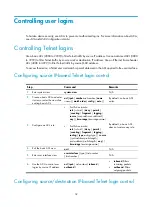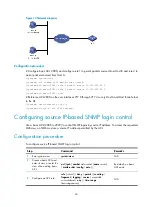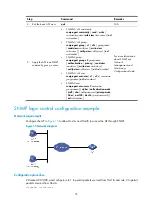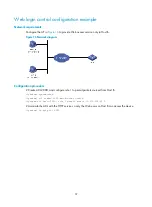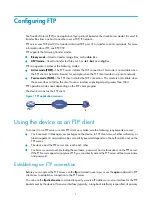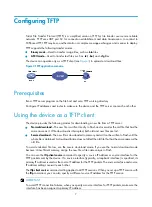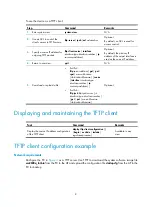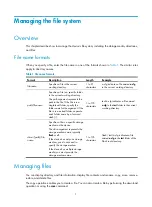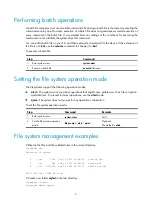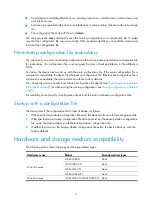
7
Configuring TFTP
Trivial File Transfer Protocol (TFTP) is a simplified version of FTP for file transfer over secure reliable
networks. TFTP uses UDP port 69 for connection establishment and data transmission. In contrast to
TCP-based FTP, TFTP requires no authentication or complex message exchanges, and is easier to deploy.
TFTP supports the following transfer modes:
•
Binary mode
—Used to transfer image files, such as
.bin
files.
•
ASCII mode
—Used to transfer text files, such as
.txt
,
.bat
, and
.cfg
files.
The device can operate only as a TFTP client (see
) to upload or download files.
Figure 3
TFTP application scenario
Prerequisites
Run a TFTP server program on the file host and set a TFTP working directory.
Configure IP addresses and routes to make sure the device and the TFTP server can reach each other.
Using the device as a TFTP client
The device provides the following modes for downloading a new file from a TFTP server:
•
Normal download
—The new file is written directly to Flash and overwrites the old file that has the
same name as it. If file download is interrupted, both old and new files are lost.
•
Secure download
—The new file is downloaded to memory and will not be written to Flash until the
whole file is obtained. A download failure does not affect the old file that has the same name as the
old file.
To avoid undesired file loss, use the secure download mode. If you use the normal download mode
because of insufficient memory, assign the new file a file name unique in Flash.
You can use the
tftp client source
command to specify a source IP address or source interface for the
TFTP packets sent by the device. If a source interface (typically, a loopback interface) is specified, its
primary IP address is used as the source IP address for the TFTP packets. The source interface and source
IP address settings overwrite each other.
The
tftp client source
command setting applies to all TFTP sessions. When you set up a TFTP session with
the
tftp
command, you can also specify a different source IP address for the TFTP session.
IMPORTANT:
To avoid TFTP connection failures, when you specify a source interface for TFTP packets, make sure the
interface has been assigned a primary IP address.


